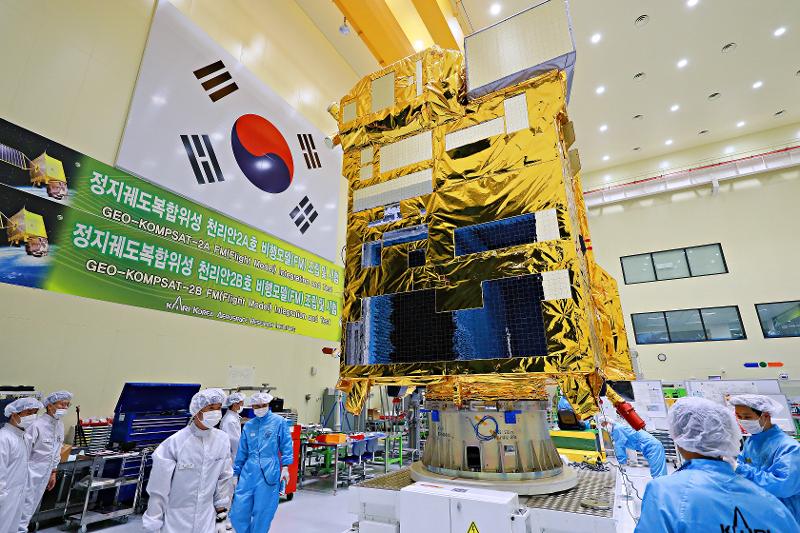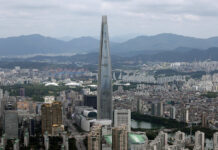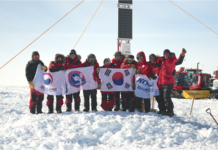
The world’s first geostationary environmental monitoring satellite Chollian 2B, which monitors fine dust and the marine environment, is unveiled on Dec. 4. The photo shows the assembled satellite. (Korea Aerospace Research Institute)
By Oh Hyun Woo and Kim Minji
The Korea Aerospace Research Institute on Dec. 4 unveiled the world’s first geostationary environmental monitoring satellite Chollian 2B made with domestic technology.
The Ministry of Science and ICT said the satellite in February is scheduled to go into geostationary orbit of 128.2 degrees from the Guiana Space Center in French Guiana. A geostationary orbit is a circular orbit that constantly observes the same area nearly 36,000 km above the equator, circulating and following the direction of the Earth’s rotation.
The main mission of the Chollian 2B is to collect observational data on the oceans and the environment in East Asia including the Korean Peninsula, such as movements of fine dust and red tide. For this task, the satellite is equipped with the world’s first Geostationary Environmental Monitoring Spectrometer (GEMS) and an improved Global Ocean Color Imager-2 (GOCI-2), improvements from the Chollian 1 launched in 2010.
NASA of the U.S. and the European Space Agency are also developing geostationary environmental satellites equipped with GEMS, but their launches are expected in two to three years.
GEMS is an optical piece of equipment with high precision used to monitor fine dust in the air. The Chollian 2B can collect data on about 20 types of air pollutants in East Asia from as east as Japan to as west as northern Indonesia and southern Mongolia.
The imager GOCI observes marine disasters including red tide and algal bloom in real time. Chollian 2B, thanks to its more advanced GOCI-2, has far higher optical resolution and the ability to monitor more types of calculated data than the Chollian 1, thus assisting the protection of the marine environment and safety at sea and management of marine resources.
From 2021, observational data on fine dust will be released to the public, a year after the satellite’s launch, and data gathering will start in October next year. Also in 2021, the emission of air pollutants and concentration of long-distance air pollutants in East Asia including Korea can be checked through mobile videos.
Choi Won-ho, director-general of the ministry’s Space and Big Science Bureau, said, “With the Chollian 2B, the government will provide high quality services for the people to effectively cope with disasters they suffer from in daily life such as red tide, algal bloom and fine dust.”
hyunw54@korea.kr























